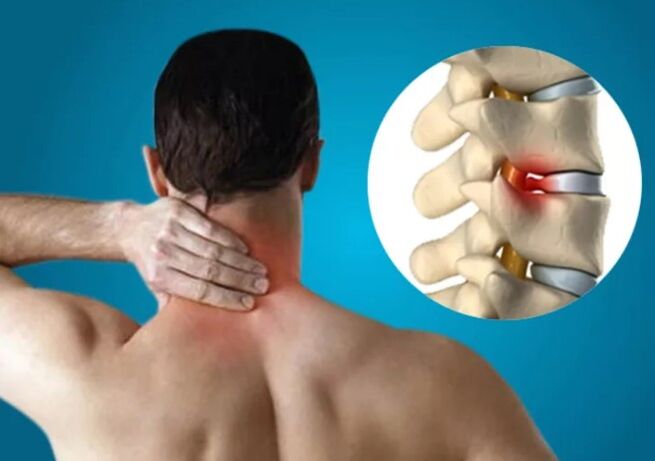Spine disease, accompanied by degenerative nutritional process in the cervical intervertebral disc.
Causes of cervical osteochondria
The most unfavorable causes of cervical vertebrae degeneration are: muscle movement - smaller physical activity, improper and irrational nutrition, salt deposition in cervical vertebrae areas, metabolic diseases, metabolic diseases, long-term work on computers, continuous drives.

Risk factors also include: cervical spine injury and hypothermia, genetic factors, hormone diseases, autoimmune diseases - rheumatism, systemic lupus erythematosus erythematosus.
Symptoms of cervical osteochondrosis
Patients have pain in their neck and neck and back, shoulder straps and hands can also give pain, and increased pain during arms, coughing and sneezing is also a characteristic of pain.As a symptom of the disease, headache is possible, general weakness, fatigue, dizziness, numbness of the limbs, fainting.As the head turns and tilts, a person's neck can tighten and suffer severe pain.Other manifestations are possible - noise in the ears, reduced vision, hearing worsening and heart pain.
Diagnosis of cervical osteochondrosis
It is necessary to seek consultation with an orthopedic or neurologist.For diagnostic purposes, the patient was examined and investigated, and X-rays of the cervical space in several projected projects were performed when necessary, magnetic resonance scans and MRI diagnosis of the cervical band were performed when necessary.
Treatment of cervical osteochondrosis
The disease requires extended, systematic and phased treatment.The main therapies are designed to eliminate pain syndromes and to fight the inflammatory process in the failed area.
Prevent cervical osteochondrosis
A healthy lifestyle, adequate nutrition and regular physical exercise to ensure proper organization of the workplace and the regime of work and rest.























